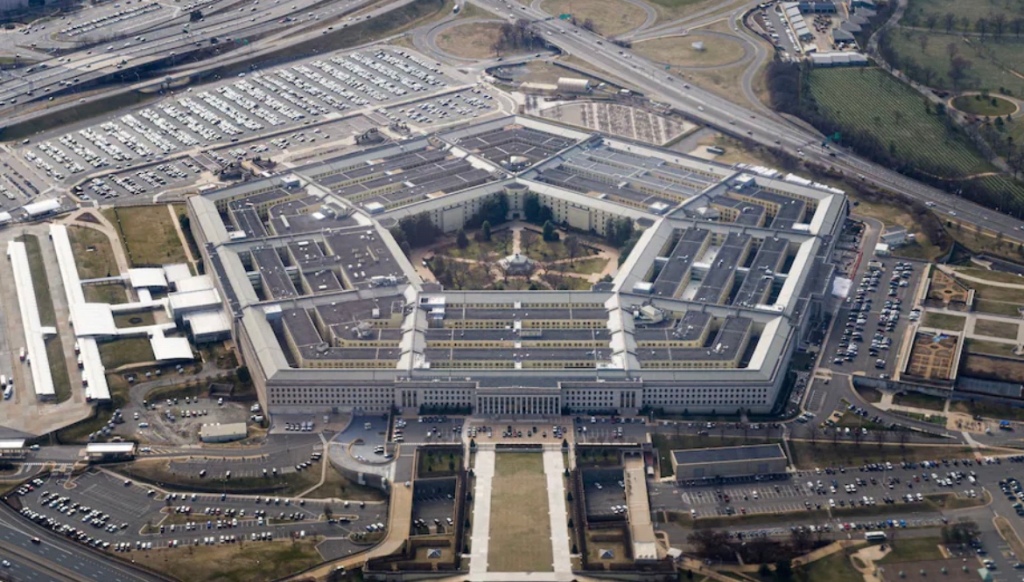
U.S. touts progress in hypersonic arms race with China, Russia
The Pentagon says it completed a successful hypersonic missile test this week and secured a $1.3 billion deal to help defend against such threats
July 19, 2022 at 2:25 p.m. EDT
The Pentagon this week said it reached important new milestones as it scrambles to catch up with China and Russia in what has become a fraught arms race between the world’s most advanced militaries, conducting a successful hypersonic missile test and securing a $1.3 billion deal to help defend against such threats.
Monday’s test of the air-breathing hypersonic missile, a partner venture of defense-tech manufacturers Raytheon and Northrop Grumman, follows separate successful tests announced last week using hardware built by Lockheed Martin. Together, they hint at a potential breakthrough for the Defense Department, which has faced growing scrutiny from lawmakers who fear the United States is losing ground to its adversaries and just last month conceded a full-system test fail.
Yet with China testing advanced-engine hypersonic missiles and Russia promising to use hypersonic cruise missiles in battle by the end of this year, U.S. officials say there is perhaps greater urgency to develop adequate defenses against such weapons. Central to that, they say, is a deal to have L3Harris Technologies and Northrop Grumman design and launch 28 satellites as part of the Pentagon’s new missile defense network.
Story continues below advertisement
“People talk about space as a war-fighting domain,” Derek Tournear, director of the Space Development Agency, told reporters in announcing the contracts. “These satellites are specifically designed to go after that next generation of threats out there.”
U.S., U.K. and Australia announce expanded cooperation on hypersonics
Since China successfully tested a hypersonic glide missile a year ago, Beijing’s and Moscow’s recent strides have put Washington on high alert. While these recent successful U.S. tests are seen as encouraging, they have not yet evened the playing field: Russian government news service Tass reported this week that Moscow completed testing its hypersonic cruise missile and intends to put it into use.
The Pentagon has laid out plans for developing resilient defenses over the next five years — a timeline that has disquieted the lawmakers tasked with funding and overseeing such research and development.
Story continues below advertisement
“I get really nervous when I hear dates like 2028 for something, and we’re pleased that it’s 2027,” Sen. Deb Fischer (R-Neb.) said to Vice Adm. Jon Hill, director of the Missile Defense Agency, during a discussion about hypersonics at a Senate Armed Services subcommittee hearing in May. “So how are we going to condense the time period?”
Hypersonic missiles can fly at speeds at or above Mach 5, five times the speed of sound, and can travel at low atmospheric altitudes. Unlike ballistic missiles, they can also change course during flight, enabling them to dodge traditional defense systems.
To date, U.S. missile defense has been focused primarily on identifying ballistic missiles, by detecting the initial heat trail registered by their blastoffs and then calculating trajectory. The maneuvering capabilities of hypersonic missiles, however, make their courses — and ultimately, their targets — far less predictable.
Story continues below advertisement
“Historically, we have not flown satellites that were designed to go after and detect hypersonic maneuvering vehicles,” Tournear said.
The Pentagon expects that by positioning a large number of heat-detecting satellites in the atmosphere, orbiting on different planes at low and medium altitudes, the U.S. military will be able to see when and how such missiles change direction. By compiling tracking data from multiple satellites in real time, the military believes it will be able to create an accurate picture of the hypersonic missile’s activity and warn those in its path to anticipate incoming strikes, either so they can attempt an intercept or take cover.
“Right now, today, we have limited capability to do that tracking aspect,” Tournear said. “The satellites we’re going to launch … can do that complete missile warning and missile tracking.”
Why the Pentagon fears the U.S. is losing the hypersonic arms race with Russia and China
Two years ago, the Space Development Agency awarded contracts to L3Harris and SpaceX to produce four satellites each. The first two of those satellites are expected to be launched in September, Tournear said, while the other six are set for next March.
Story continues below advertisement
The 28 satellites covered by the contracts announced this week are scheduled to begin launching in April 2025, in four sets of seven, each of which will orbit on a different plane.
The tranche that follows is likely to have 54 satellites, officials say.
“We get resilience by proliferation,” Tournear said.
Bidding for the next round of satellite contracts has not yet opened, and it is unclear how many firms will compete. In the initial round, 10 companies sought to build eight satellites; in the current round, seven firms put in bids. Tournear would not identify which companies were excluded but said that, overall, the quality of submissions improved markedly between rounds.
Still, at a current cost of about $50 million per satellite, which is about half the full budget for launching and operating them, the cost to American taxpayers will only grow as the program becomes a permanent fixture of the federal budget. The projected life span of each satellite tops out at five years, Tournear said, meaning the entire fleet will have to be replaced at regular intervals.
No comments:
Post a Comment